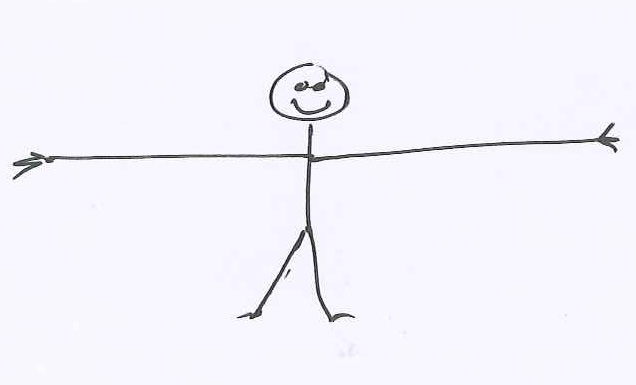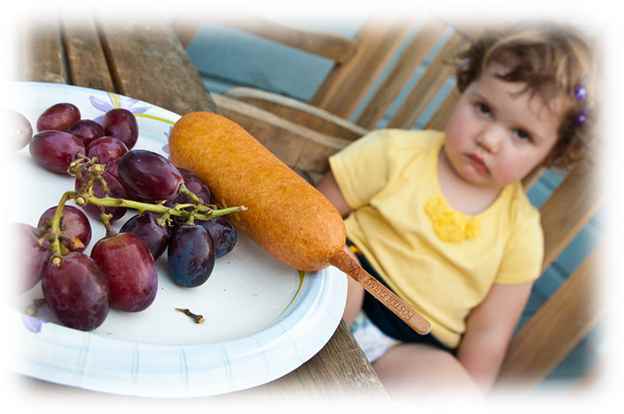I have this wonderful daughter of mine,
Who’s love and thoughtfulness is so kind.
Her words and deeds,
Like birds and bees,
Make me smile and beam like sunshine.
I have this wonderful daughter of mine,
Who’s love and thoughtfulness is so kind.
Her words and deeds,
Like birds and bees,
Make me smile and beam like sunshine.
Apparently my 6 year old daughter has a poor working memory and this is holding her back in her class at school and has the potential to impact her entire schooling career.
At a parent/teacher meeting a little before Christmas, my daughter’s teacher said that she was very much behind the other children in her class. She struggles with group activities and hides behind the abilities of her peers. Finally, she dropped the bomb shell “There may be something wrong with her and we’d like your permission to put her on a watch list”.
WHAT!? Apart from being very unhelpful just to say “there may be something wrong with your daughter” and not to mention that this is the first anyone has mentioned about Olivia having a problem, where’s the help!? Where’s the advice for her parents to help her!?
After I’d had a chance to calm down I did some research and found that it’s actually fairly common and I even noticed some of the struggles I’ve had in my own life may well be caused by a poor working memory which also would explain where Olivia got it from as it’s apparently genetic.
What follows is a parcel of the information I found out when researching the possible problem(s) and what I could help do about it.
Working memory is the kind of mental blank page we use to carry out temporary calculations, ordering and list making in our heads.
Working memory shouldn’t be confused with short term memory (though it does use it and they are related) – Working memory allows us to take what’s in our short term memory and manipulate it (e.g. perform calculations, re-order or in some way modify the items in it).
The following symptoms were suggested on the Parenting Science page on working memory and it was these symptoms that stood out for me with Olivia.
It is worth pointing out that the web pages (see references at the bottom of this article) suggested that working memory deficiencies may be the underlying cause of other things such as:
It is important to point out that poor working memory does not mean the child has a low IQ (phew!). The problem is that it can look like the child has poor IQ because they struggle to learn without special attention and methods geared towards their needs.
Working memory can also be specific to different sensory channels. For example, a child might be fine remembering and replaying the sequence of visual queues, but given the same queues by sound instead of vision and suddenly they can’t remember it at all. This is why, when you’re playing games and doing exercises specifically to develop and train their working memory (see the section at the bottom of this article) it is especially important that you do so using all their sensory channels (visual, auditory and touch at least) .
From what I’ve been reading it seems that working memory may or may not be a fixed thing so lets, for the sake of my sanity and the need to feel like I can do something to help my daughter, assume that it isn’t and that with work and practice we can help her.
There are lots of “brain training” type ideas, games, exercises and programs available and the argument that working memory is fixed is based on the idea that while doing the exercises and games will improve the person’s ability to do that exercise or game; it doesn’t seem to extend into other areas of related brain usage.
let’s put that aside for the time being and focus on the exercises and games that may or may not help, because doing something is sure as anything better than doing nothing!
CogMed is a computerised training system provided by Pearson that claims to help train children who have poor working memory. In my reading, it came up quite a lot and their website and offerings are specifically dedicated to helping children with working memory difficulties.
While reviews are mixed on it’s effectiveness, there is a deal of research and work going in to it and it may be a good avenue to pursue. I may well give them a ring about my daughter and see what we can do and whether I can afford it.
Here are some ideas of games and exercises that I came across or thought of during my research about Olivia’s working memory:

Remember to use all the sensory faculties when helping train their working memory.
One thing I’m particularly bad at is charting and yet it is a very effective motivator for kids. From this day onwards, I hearby declare that I will be creating a big chart for Olivia to show her progress and allow here to earn gold stars.
Since Christmas, O’s school have started extra classes for her and some of her classmates who are likewise behind. It’s actually a great sign that she’s at a good school. We’ve also added (poor sausage) extra maths and english homework to her after class routine as well as weekends. At our parent-teacher meeting in March, her teacher said that she had improved, but that she was merely maintaining her position in relation to the rest of her classmates. That said, several of the other kids have slipped and she’s no longer at the bottom.
It’s hard work for O and for us and I really hope that our perseverance (something that she was also criticised for) pays off for her.
The National Centre for Learning Disabilities has several articles about working memory and the one on helping children with working memory difficulties is one I have used heavily for my research and this article.
The CogMed has lots of stuff about working memory and of course their products, but it is worth a look.
ParentingScience.com had some very interesting stuff and the poor working memory symptom identification points I used above.
I really recommend a good Google on the subject as there are lots of pages out there about it.
As I explained in my Valentine’s poem last year, my Dad was a secret poet and I didn’t find out until after he died so every now and then, I like to do something special for Olivia. Be it drawing a picture and posting it to her or writing and then reading a poem. Below is this year’s attempt at bringing together a game we enjoy playing and referencing places she knows.
It took me an hour to write (on the train from Gravesend to London Waterloo) and I hope it gives you some ideas or the motivation to give it a go yourself. I’m no poet laureate so I hope the effort and personal nature of the poem demonstrates to her that I love her with all my heart.
To Olivia,
From here to the beach at Margate,
(But not stopping there: mustn’t be late!)
Onwards to Paris and further still:
To Italy, Rome and Greece if you will.
On past the place that you love the most:
(that’s Turkey of course and the Turquoise coast)
To Moscow, Berlin and Johannesburg to,
To Canada and Alaska where it’s too cold for you.
To the Moon and back,
And not only that!
Around the Globe, twice
(Or perhaps even thrice!)
To the bottom of the Ocean,
(And that’s a craaazy notion!)
But why all this way?
Why don’t I just say,
I love you how much?

I love you this much.
Dad
Xxx
I should explain that Olivia and I have a little game we play in the car or, thinking about it, pretty much any time where one of us will choose a number and say that they love the other that much.
“Olivia?”
“Yes Daddy?”
“I love you 5!”
“I love you 6!”
etc. etc.
It quickly escalates from there with numbers getting bigger and bigger until we get to physical descriptions of space.
“I love you to Turkey! AND back!” (Olivia has had a couple of holidays there and she has a rough idea of where it is and how long it takes to get there)
Eventually we run out of descriptions of things and go totally abstract:
“I love you chocolate buttons!”
“I love you swings!”
It usually ends in fits of giggles and a big hug (assuming we’re not in the car – that would be dangerous…)
If you’ve written a poem or tale for your kids, do share the story in the comments. I’d love to hear what other parents are making of it.
One of the greatest gifts we can give to our children is that of knowledge and awareness.
Making sure that our children understand how people in our world differ and what causes this is an important trait that any young person can have.
Although this is a staple, not all parents have the ability to teach this to their children without some help and guidance from external sources.
There are many resources that can help parents teach their children about religion. Whether you want to just give a general overview or go into great depths, there is something out there to make sure that you are able to give you child the knowledge.
There are many different ways to approach this conversation, whether you chose to use books, classes or just have the conversation on your own, there is something for you that will help make this conversation as simple as possible.

If you are seeking out assistance from either a book, website or class one of the first and most important things you want to do is research.
You want to make sure that the specific organization you are using is not going to emphasis one religion or, even worse; give your children bigoted or racist opinions. You can always read reviews and testimonials. If you want to make your own opinion, it may be a good idea to review the content before sharing it with your child.
Remember, you want to give your child an overall view on religions and ways they differ from one another, so the last thing you want is to have your child become sectarian.
The Kids book of World Religions by Jennifer Glossop is a great tool for parents explaining religion to a younger group of children (3-9).
The book is well illustrated and takes a light-hearted approach to explaining different types of religious views including Hinduism, Islam, Christianity and Sikhism. Basic information is given on each of these religions (book includes many more).
Information includes basic teaching, sacred places and events, religious leaders and scriptures. The book‘s well- illustrated pages make it exciting for a younger child to follow along.
If your audience is a little older, another great book is One World, Many Religions: The Ways We Worship by Mary Pope Osborne.
This is another book that shows the differences between major religious groups in our world.
The book will introduce six major groups and dedicates an entire chapter to that one group. This is great for any kids between 7 and 10.
There are many different organisations that can provide religious education to children of all ages and certainly in the UK there is a religious awareness built into all state school run curriculum. My daughter has certainly celebrated several different religious festivals in her first two years at school.
If you chose to teach your children about different belief systems and religions yourself, there are a few ground rules you want to follow in order to make sure you are coming across and indifferent and unbiased to the differences.
It may be a good idea to attend some religious services to give your kids a first hand experience of what happens and use the time and place to explain some of the aspects, totems, idols or tenets of the system. The key is to make it a fun outing rather than an enforced trip. I’m planning on taking my daughter to the local Sheikh temple soon and to show her how generous they are the way they provide free food to visitors and to explain some of what they believe and why.
Make sure you’re as open minded and un-biased as possible when explaining and answering questions.
Children often mimic their parents (we are after all their best role models) so of course, if you hold a certain opinion they will surely follow.
It’s also recommended that with younger children you make them aware of what commonalities different religions have. This will help them understand that even though some aspects of faith are different, often times we have views that are alike.
Since religion is such an important subject, it’s important that you are comfortable with how it is being taught to your child. For an older crowd, many community colleges offer believe system classes that are usually open to people that just want to explore and not necessarily obtain a degree.
These are all great options for those wanting to explore with others since they are all classroom environments.

As you are going through the journey of teaching your child about the different types of religions around the world, it’s important to always remember to approach this with an open mind and allow for your child to explore and ask questions about the different types of faith.
However you decide to introduce them, it’s important that you keep an open mind and leave all prior thoughts and opinions out of the conversation.
You want to make sure that your child feels comfortable and is able to ask any questions they want without feeling bad for asking.
OK, I know this article isn’t strictly in the storytelling arena, but my daughter is a fussy eater, so I thought I’d share some tips that may or may not help if your kids pick at their food and pull silly faces and make disturbing sounds at something as ordinary as brocoli or a roast potato.
 Continue reading 9 tips to help parents of children who are fussy eaters
Continue reading 9 tips to help parents of children who are fussy eaters